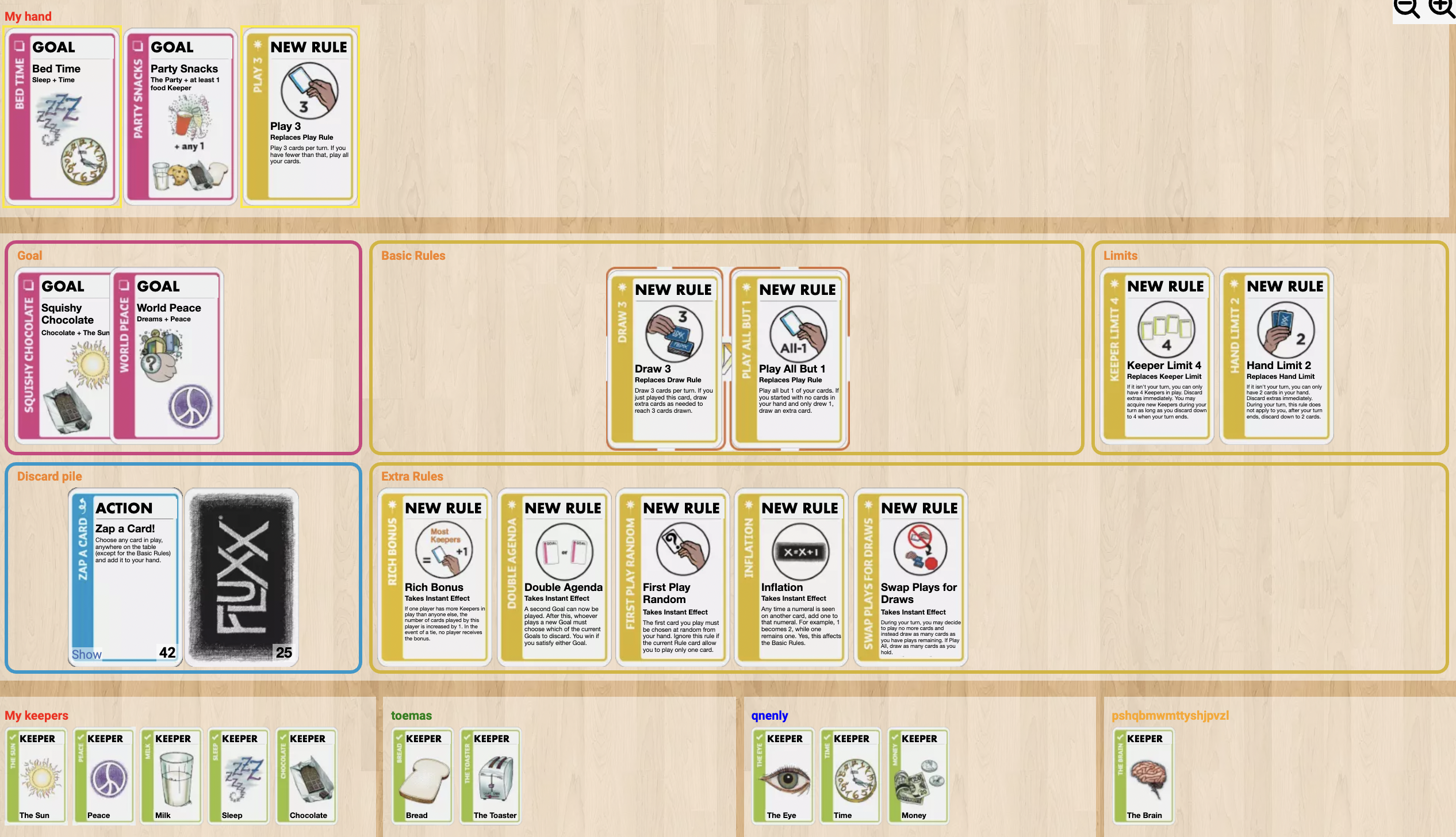Critical play of FLUXX:
I played FLUXX with four players (Thomas, Katherine, Melody, myself). We played two rounds, the first of which lasted much shorter than the second. It was interesting to see how adaptable someone had to be in order to win this game, I feel like since the rules and goals (end conditions to win) change so often, it is smart to not get too attached to the cards in your hand. I think there is a bit of luck with what goal and keeper cards one has/are at play. When my group played, it seemed like people were still getting used to the game so most people were focused on fulfilling the goals and winning that way rather than using the different cards to sabotage players. It was pretty interesting to see how the game could even stall depending on the “new rule” (limitation) cards that were at play, forbidding players to take cards. It seems like there are so many possibilities of combinations of “new rules”, and I am curious about the rest of these cards and actions that are present in the deck, since they can make the playing experience different extremely rapidly.

Formal elements of FLUXX:
Players: FLUXX can be played with 2-6 players. It is a competitive multiplayer game with uniform roles.
Objective: The objective of the game is to satisfy a particular condition with “Keeper” cards that is set and edited throughout the game on the “Goal” cards.
Procedure: The procedures of this game include various starting actions, progressions of actions, and special actions using the types of cards: “New Rule”, “Keeper”, “Goal”, and “Action”.
Rules: The different types of cards as described above inherently edit the “rules” of the game, as well as the winning conditions. The cards define allowable player actions, restricting actions and demanding certain actions as needed. These limitations are created especially by the “New Rule” card, which instantaneously change the way the game works and conditions that players need to satisfy (e.g. how many cards to draw per round).
Resources: The resources in this game include all of the different types of cards that can be in a player’s hand. They are able to be traded or discarded among players depending on the rules of the game.
Conflict: The game introduces mental conflict with the opponents in the game, as well as dilemmas for players to decide which cards to play/keep in/discard from their hand.
Boundaries: We played this game on the internet, which was the “physical” boundary of the game. The game was separated from the “not game” by the magic circle.


